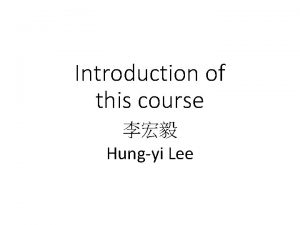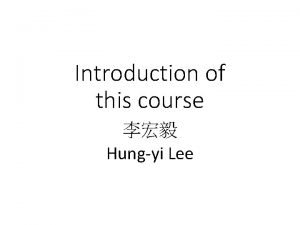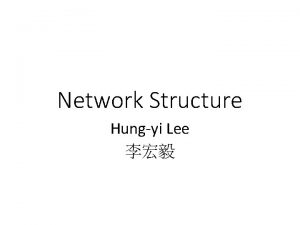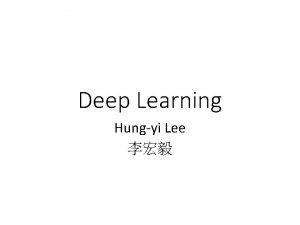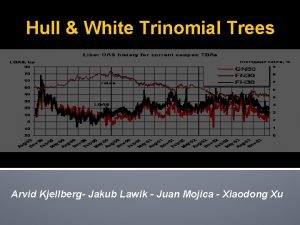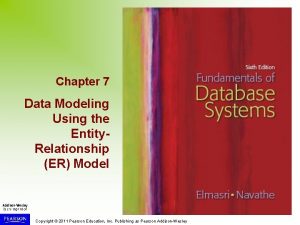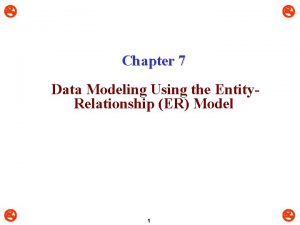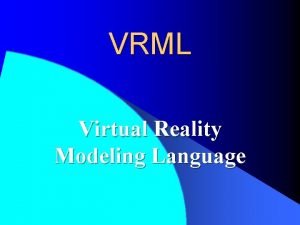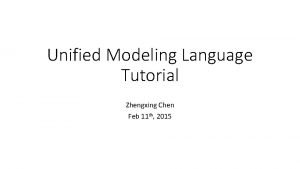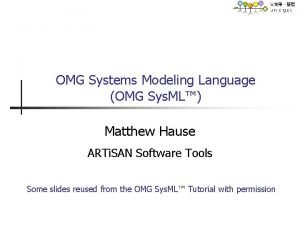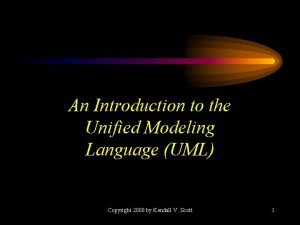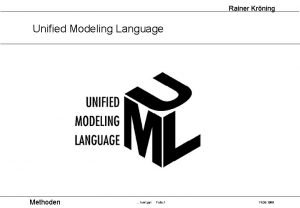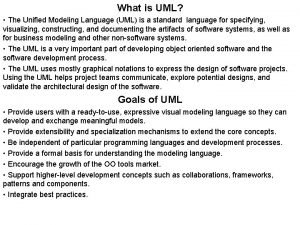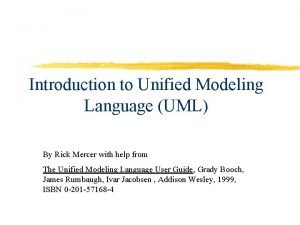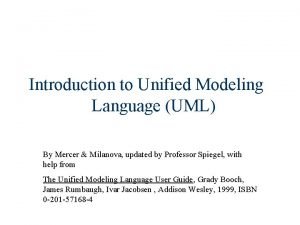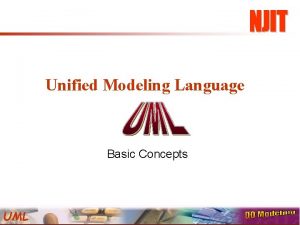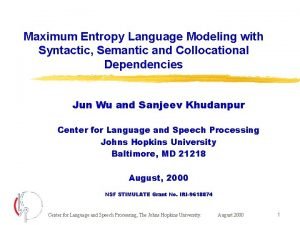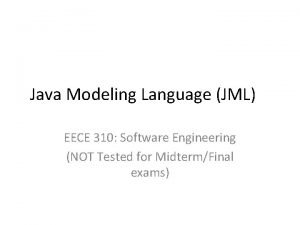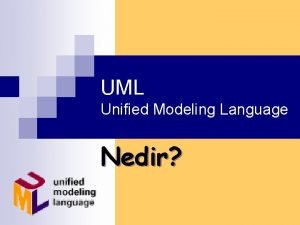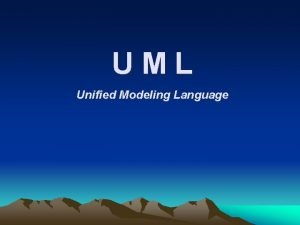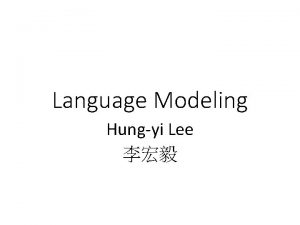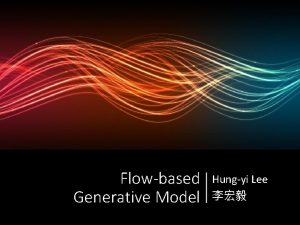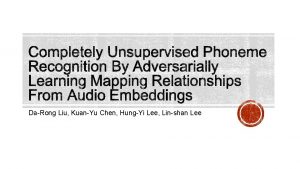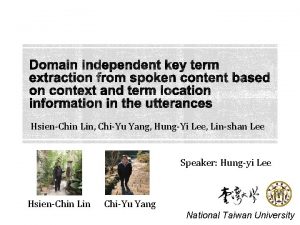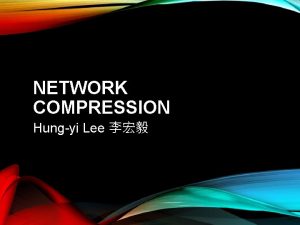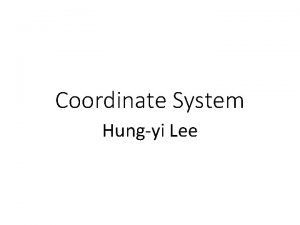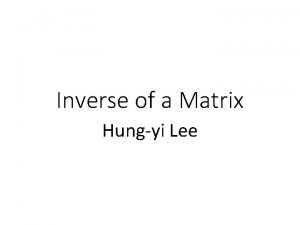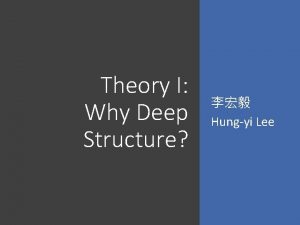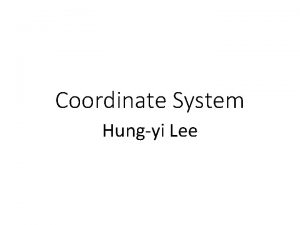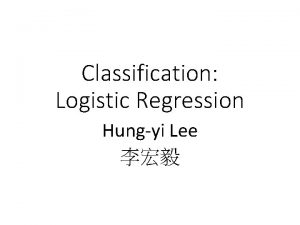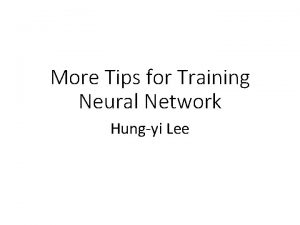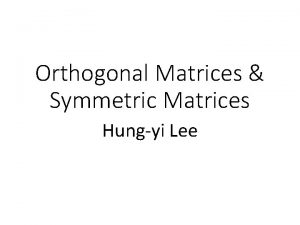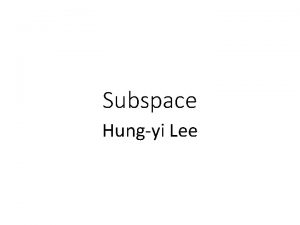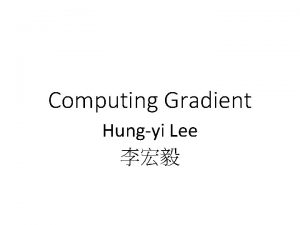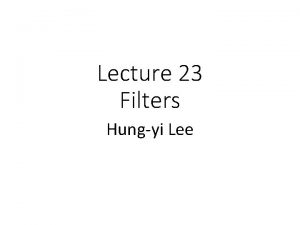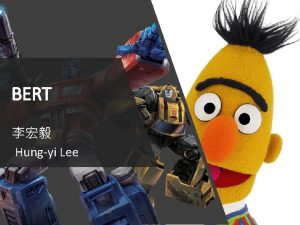Language Modeling Hungyi Lee Language modeling Language model



























- Slides: 27

Language Modeling Hung-yi Lee 李宏毅

Language modeling • Language model: Estimated the probability of word sequence • Word sequence: w 1, w 2, w 3, …. , wn • P(w 1, w 2, w 3, …. , wn) • Application: speech recognition • Different word sequence can have the same pronunciation If P(recognize speech) >P(wreck a nice beach) recognize speech or Output = wreck a nice beach “recognize speech” • Application: sentence generation

N-gram P(“wreck a nice beach”) =P(wreck|START)P(a|wreck )P(nice|a)P(beach|nice) • How to estimate P(w 1, w 2, w 3, …. , wn) • Collect a large amount of text data as training data • However, the word sequence w 1, w 2, …. , wn may not appear in the training data • N-gram language model: P(w 1, w 2, w 3, …. , wn) = 2 -gram P(w 1|START)P(w 2|w 1) …. . . P(wn|wn-1) • E. g. Estimate P(beach|nice) from training data Count of “nice beach” Count of “nice” • It is easy to generalize to 3 -gram, 4 -gram …… 3

NN-based LM • Training: Collect data: 潮水 退了 就 知道 誰 … 不爽 不要 買 … 公道價 八萬 一 … ……… Minimizing cross entropy 潮水 退了 退了 就 就 知道 Neural Network 就 Neural Network 知道 Neural Network 誰

NN-based LM P(“wreck a nice beach”) =P(wreck|START)P(a|wreck)P(nice|a)P(beach|nice) P(b|a): the probability of NN predicting the next word. P(next word is “wreck”) P(next word is “a”) P(next word is “nice”) P(next word is “beach”) Neural Network 1 -of-N encoding of “START” 1 -of-N encoding of “wreck” of “a” of “nice” 5


RNN-based LM Ø Modeling long-term information Ø People also use Deep RNN or LSTM • To compute P(w 1, w 2, w 3, …. , wn) by RNN P(w 1, w 2, w 3, …. , wn) =P(w 1)P(w 1|w 2)P(w 3|w 1, w 2) …… P(wn|w 1, w 2 … wn-1) P(w 2|w 1) P(w 3|w 1, w 2) P(w 4|w 1, w 2, w 3) …… …… …… begin w 1 w 2 w 3

Challenge of N-gram • The estimated probability is not accurate. • Especially when we consider n-gram with large n • Because of data sparsity • Large model, not sufficient data Training Data: The dog ran …… The cat jumped …… P( jumped | the, dog ) = 0 0. 0001 P( ran | the, cat ) = 0 0. 0001 Give some small probability This is called language model smoothing.

Matrix Factorization Vocabulary Recommendation System: History as customer, vocabulary as product …… dog cat …… child ran 0. 2 0. 3 0. 1 jumped 0 0. 2 0. 1 cried 0 0 0. 3 laughed 0 0 0. 3 history …… Not observed P( jumped | cat ) Minimizing

Matrix Factorization Vocabulary Recommendation System: History as customer, vocabulary as product …… dog cat …… child ran 0. 2 0. 3 0. 1 jumped 0 0. 2 0. 1 cried 0 0 0. 3 laughed 0 0 0. 3 history …… Not observed P( jumped | cat ) History “dog” and “cat” can have similar vector hdog and hcat Even if we have never seen “dog jumped …” Smoothing is automatically done.

Matrix Factorization target cat 0 ran 0. 2 P(ran|dog) softmax dog 1 history 1 -of-N encoding Cross Entropy cried P(cried|dog) vocabulary Consider it as a NN …… 0. 0 from training data

(0 otherwise) RNN-based LM ran cried If we use 1 -of-N encoding to represent the history, history cannot be very long. ht h 0 f h 1 f …… …… f

Class-based Language Modeling class 1: Animal dog cat bird W = “w 1 w 2 w 3” class 2: Verb class 3: Function word ran jumped walk the by a C(wi): class of word wi P(W) = P(w 1|START) P(w 2|w 1) P(w 3|w 2) P(W) = P(C(w 1)|START) P(C(w 2)|C(w 1)) P(C(w 3)|C(w 2)) X P(w 1|C(w 1)) P(w 2|C(w 2)) P(w 3|C(w 3)) 13

Class-based Language Modeling class 1: Animal dog cat bird W = “the F dog A class 2: Verb class 3: Function word ran jumped walk the by a ran” V P(W) = P(F|START) P(A|F) P(V|A) X P(the|F) P(dog|A) P(ran|V) P( class i | class j ) and P(word w| class i ) are estimated from training data. 14

Class-based Language Modeling P( class i | class j ) and P(word w| class i ) are estimated from training data. Training data the dog A F W = “the F ran V cat ran” A V the F cat A jumped V P(ran|cat) is zero given the training data However, P( Verb | Animal ) is not zero 15

Soft Word Class How to determine the classes of the words? Word Embedding 1 -of-N Encoding apple = [ 1 0 0] bag = [ 0 1 0 0 0] cat = [ 0 0 1 0 0] dog = [ 0 0 0 1 0] elephant = [ 0 0 1] We cat rabbit run jump dog We tree flower

Bengio, Y. , Ducharme, R. , Vincent, P. , & Jauvin, C. (2003). A neural probabilistic language model. Journal of machine learning research, 3(Feb), 1137 -1155.

ran RNN-based LM cried + Embedding Layer ht h 0 f h 1 f …… We We …… …… We

Character-based LM Source of image: http: //karpathy. github. io /2015/05/21/rnneffectiveness/

Long-term Information Andrej Karpathy, Justin Johnson, Li Fei-Fei, Visualizing and Understanding Recurrent Networks, https: //arxiv. org/abs/1506. 02078

yt ct LSTM ht xt -1 is red +1 is blue


CNN for LM Yann N. Dauphin, Angela Fan, Michael Auli, David Grangier, Language Modeling with Gated Convolutional Networks, https: //arxiv. org/abs/1612. 08083

Neural Turing Machine for LM Wei-Jen Ko, Bo-Hsiang Tseng, Hung-yi Lee, “Recurrent Neural Network based Language Modeling with Controllable External Memory”, ICASSP, 2017

For Large Output Layer • Factorization of the Output Layer • Mikolov Tomáš: Statistical Language Models based on Neural Networks. Ph. D thesis, Brno University of Technology, 2012. (chapter 3. 4. 2) • http: //speech. ee. ntu. edu. tw/~tlkagk/courses/MLDS_2015/NN%20 Lecture/ RNNLM. ecm. mp 4/index. html • Noise Contrastive Estimation (NCE) • X. Chen, X. Liu, M. J. F. Gales and P. C. Woodland, "Recurrent neural network language model training with noise contrastive estimation for speech recognition, “ ICASSP, 2015 • B. Zoph , A. Vaswani, J. May, and K. Knight, “Simple, Fast Noise-Contrastive Estimation for Large RNN Vocabularies” , NAACL, 2016 • Hierarachical Softmax • F Morin, Y Bengio, “Hierarchical Probabilistic Neural Network Language Model”, Aistats, 2005 • Blog posts: • http: //sebastianruder. com/word-embeddings-softmax/index. html • http: //cpmarkchang. logdown. com/posts/276263 --hierarchical-probabilistic -neural-networks-neural-network-language-model

To learn more …… • M. Sundermeyer, H. Ney and R. Schlüter, From Feedforward to Recurrent LSTM Neural Networks for Language Modeling, in IEEE/ACM Transactions on Audio, Speech, and Language Processing, vol. 23, no. 3, pp. 517 -529, 2015. • Kazuki Irie, Zoltan Tuske, Tamer Alkhouli, Ralf Schluter, Hermann Ney, “LSTM, GRU, Highway and a Bit of Attention: An Empirical Overview for Language Modeling in Speech Recognition”, Interspeech, 2016 • Ke Tran, Arianna Bisazza, Christof Monz, Recurrent Memory Networks for Language Modeling, NAACL, 2016 • Jianpeng Cheng, Li Dong and Mirella Lapata, Long Short. Term Memory-Networks for Machine Reading, ar. Xiv preprint, 2016

 硬train一發
硬train一發 Hungyi
Hungyi Hungyi lee
Hungyi lee Hungyi lee
Hungyi lee Hungyi lee
Hungyi lee Erickson nursing theory
Erickson nursing theory Dimensional modeling vs relational modeling
Dimensional modeling vs relational modeling Lee’s model of migration
Lee’s model of migration Hull white tree
Hull white tree Data modeling using entity relationship model
Data modeling using entity relationship model Company er diagram
Company er diagram What is vrml
What is vrml Unified modeling language tutorial
Unified modeling language tutorial Omg systems modeling language
Omg systems modeling language Introduction to the unified modeling language
Introduction to the unified modeling language Virtual reality modeling language
Virtual reality modeling language Unified modeling language ppt
Unified modeling language ppt Pengertian unified modeling language
Pengertian unified modeling language What is uml
What is uml Uml overview
Uml overview Introduction to unified modeling language
Introduction to unified modeling language Mercer oneview login
Mercer oneview login Uniform modeling language
Uniform modeling language Language modeling incorporates rules of
Language modeling incorporates rules of Java modeling language
Java modeling language Uml nedir
Uml nedir Fungsi uml
Fungsi uml Uml full form
Uml full form
